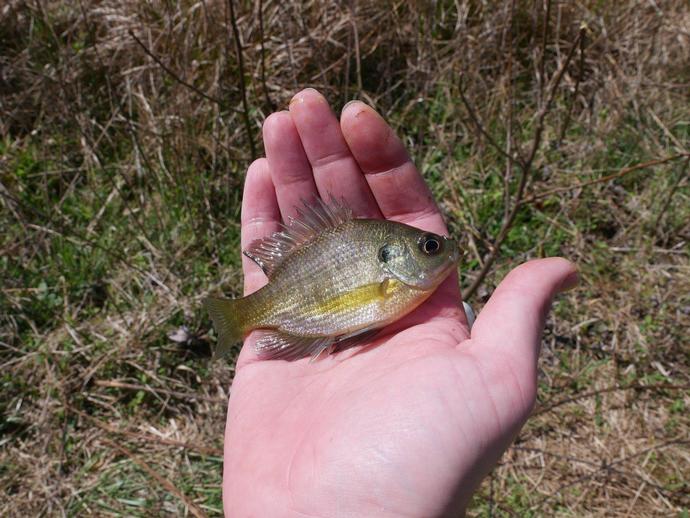October 11, 2020
We're reaching into the archives for today's #BenInNature post!
In the early 1990s, my grandfather dug out a pond on the old family property. Every time he went fishing, he would take a few fish out of the livewell and toss them in the pond, mostly bluegill and catfish. I don't know that any catfish are still in the pond, but nearly 30 years later, there's still a healthy population of bluegill.
Bluegill (Lepomis machrochirus) are members of the sunfish family Centrarchidae. They are native to North America and can be found in any number of streams, rivers, lakes and ponds east of the Rocky Mountains (although they have been introduced west of the Rockies as well). Under the right conditions, bluegill can grow up to 12 inches long and weigh nearly five pounds! Bluegill are a popular panfish, especially if you're taking a little kid out fishing for the first time. They show no fear of humans and will strike at just about anything that can fit in their mouths.
In some parts of the world, bluegill also serve as a cautionary tale of the dangers of introducing a non-native species into a new habitat. In 1960, Chicago Mayor Richard J. Daley sent some bluegill to Crown Prince Akihito of Japan as a gift. The prince donated the fish to a Japanese fishery research agency. The crafty bluegill somehow managed to escape, and to this day their descendants plague Shiga Prefecture's Lake Biwa, where they outcompete the native species for food. That's why you should never take a critter out of its environment and release it somewhere else (you know, like my grandpa did).
*This post was originally published on April 4, 2020.
ABOUT #BenInNature
Social distancing can be difficult, but it presents a great opportunity to become reacquainted with nature. In this series of posts, Administrator of Science Ben Williams ventures outdoors to record a snapshot of the unique sights that can be found in the natural world. New updates are posted Monday - Friday, with previous posts highlighted on the weekends.
NATURE PHOTO IDENTIFICATIONS
If you discover something in nature that you would like help identifying, be sure to message us right here on Facebook with a picture (please include location and date of picture) and we'll have our experts help you identify it!

 Hours & Admissions
Hours & Admissions Directions
Directions

